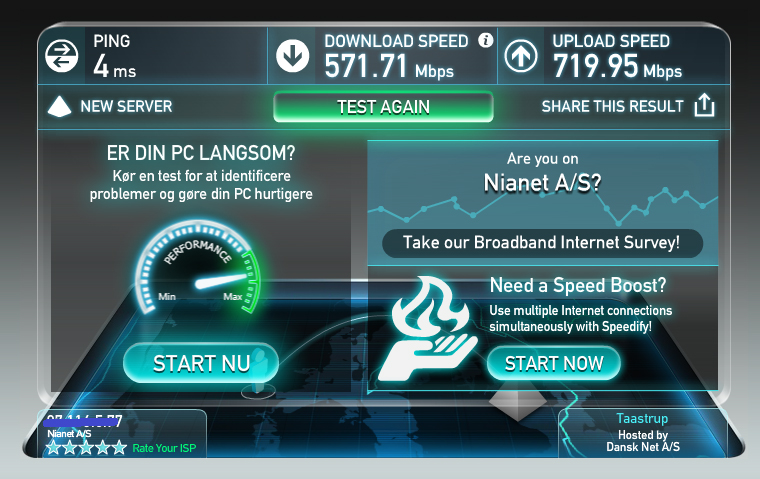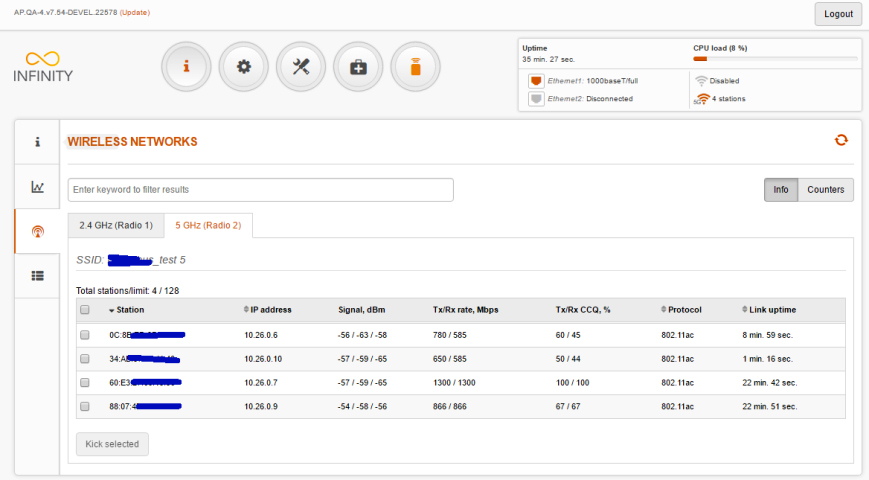LigoWave‘s distributor from Denmark (Cloudrouter) has shared the results of Infinity product line tests performed in Denmark. The throughput of different models was measured by transferring a large file in the network.
Summary of results
| Model | Throughput | Band | Channel width |
| NFT 2ac | 500 Mbps | 5GHz | 80MHz |
| NFT 2ac | 110 Mbps | 2.4GHz | 20MHz |
| NFT 2N | 210 Mbps | 5GHz | 40 MHz |
| NFT 2N | 170 Mbps | 2.4GHz | 40MHz |
| NFT 2N | 96 Mbps | 2.4GHz | 20MHz |
| NFT 1N AF | 96 Mbps | 2.4GHz | 20MHz |
In a world of cloud – based storage and fiber connections, there are still many companies using a local file server environment. Whether the company uses a cloud drive or the local file server, there is still a need for a good end-to-end network, especially when working with large files.
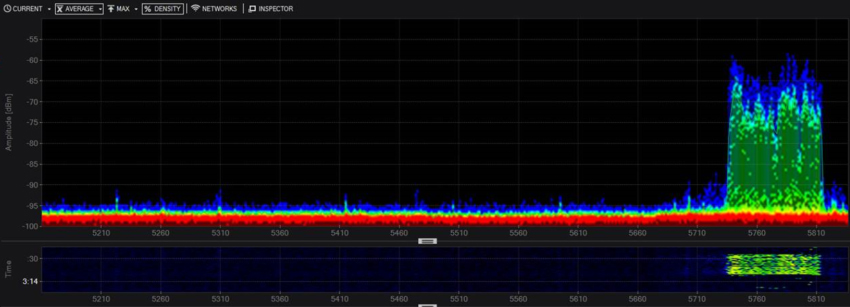
Four different Infinity series access points were tested during the experiment. The devices were deployed in the same conditions and tests were carried out with the aim that results will be helpful for customers, designing the new Wi-Fi solutions for business, schools, enterprises, etc.
LigoWave NFT 2ac test (5 GHz radio)
Testing was started with NFT 2ac model. It is a cost-effective 802.11AC dual-radio and dual-band access point with three Gigabit Ethernet ports (one of them supproting 802.3af/at standards to power the device from PoE switch). There is also 42 – 57 volt DC input as well. 5GHz radio can reach a maximum data rate of 867 Mbps while the 2.4GHz radio can go up to 300 Mbps. During the test a steady 500 Mbps throughput was achieved on a 5 GHz radio.
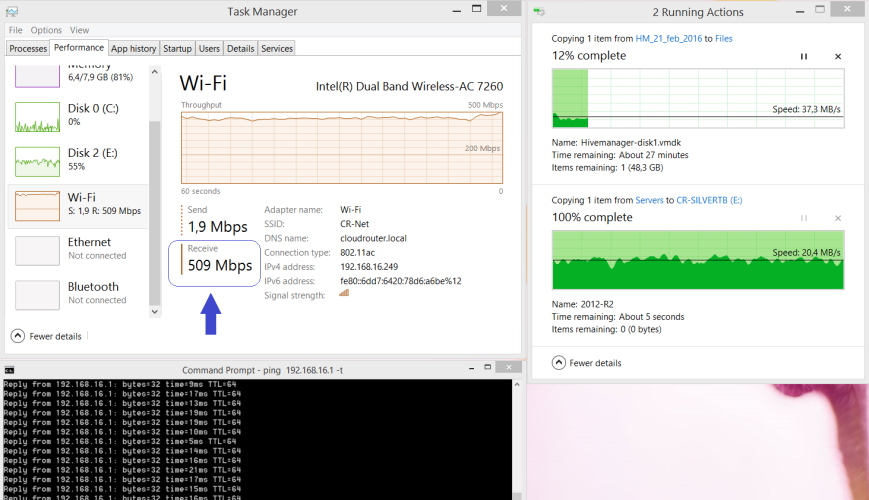
NFT 2ac can operate in almost all 5 GHz channels including indoor channels 36-64 and outdoor DFS channels 100 – 161. The 161 channel ( 5805 MHz ) has been used as the center frequency of 80 MHz spectrum. The above spectrum measurement shows how the transmission breaks down from 5735 MHz – 5815 MHz for a real-life 500 Mbps data transfer. This is one of the reasons why Infinity APs generally have better range and stability of handheld devices.
NFT 2ac ( 2.4GHz )
Since 2.4 GHz is a highly occupied frequency band, the usage of 40 MHz channels is not possible and causes extensive interference to other users who are operating nearby APs. Therefore it is more appropriate to run 2.4 GHz devices on 20 MHz channel width and avoid possible throughput degradation.
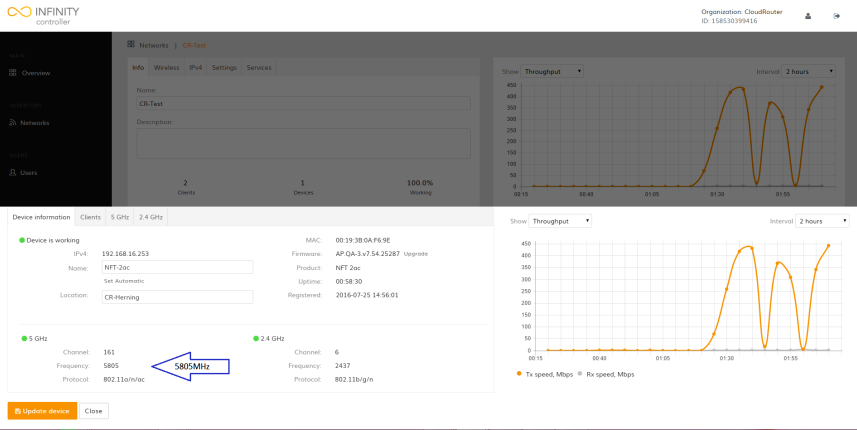
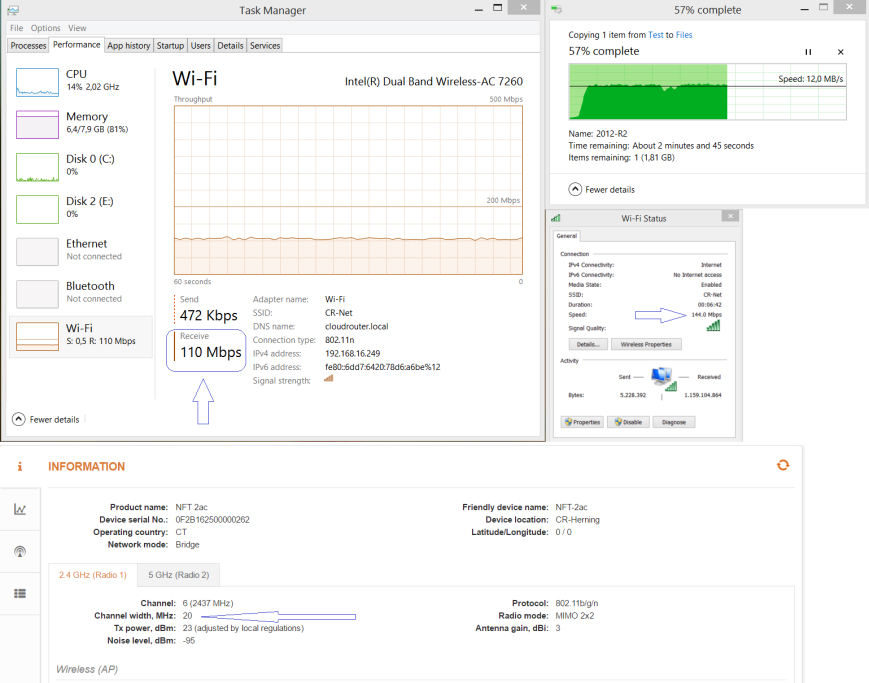
While using 2.4 GHz radio for the file transfer the 20 MHz channel width was chosen. Even though the 2.4 GHz is a noisy band, the transfer was smooth and stable at just over 100 Mbps throughput.
NFT 2N
The Infinity NFT 2N is a high-performance dual-radio access point from LigoWave, equipped with two 3×3 MiMo 802.11N radios operating in the 2.4 and 5 GHz bands concurrently. Both radio modules feature 3 x 3 MIMO. This can be an advantage for receiving better connectivity quality.
Access Point is equiped with one Gigabit Ethernet port with 802.3af PoE and 12 volt DC input jack.
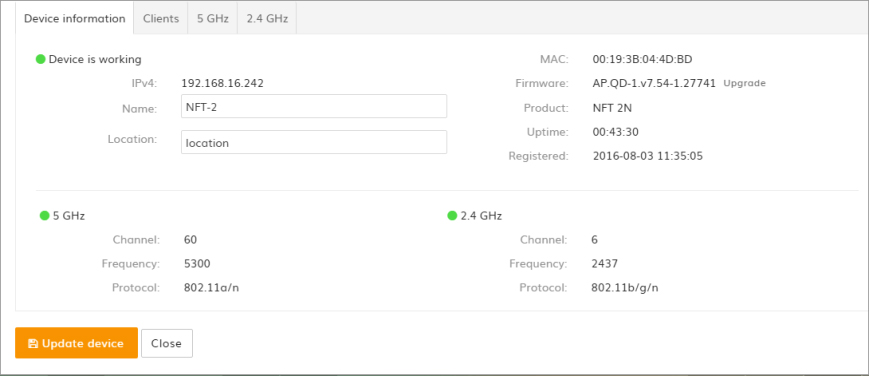
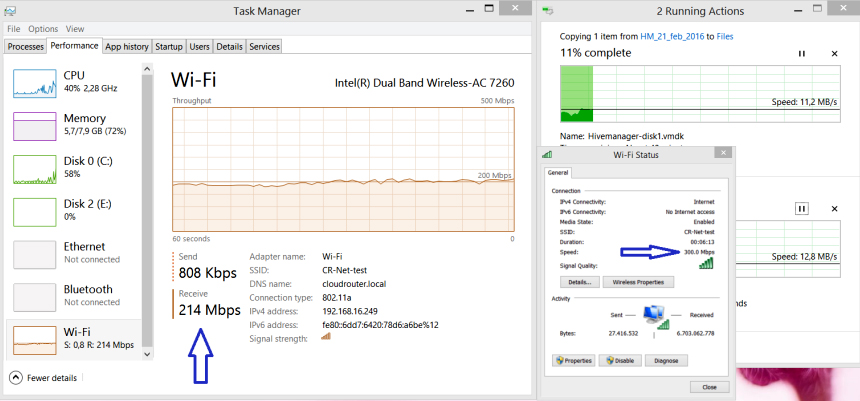
File transfers NFT 2N 2.4GHz Radio
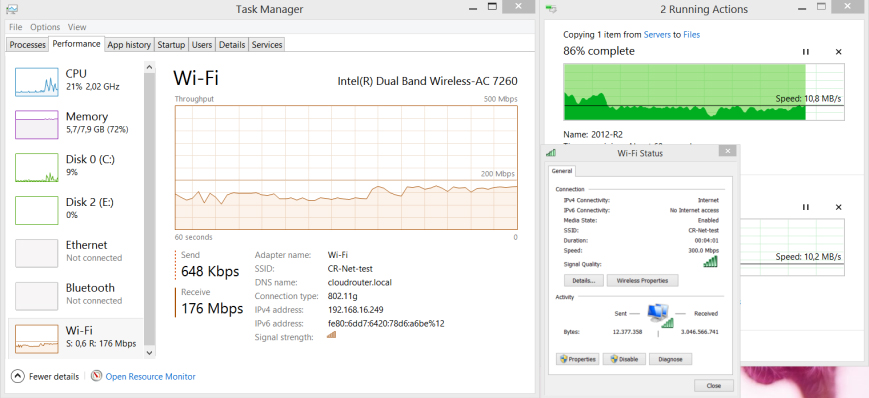
While performing tests in moderately interfered environment, NFT 2N achieved an actual throughput of 96 Mbps on 20 MHz channel width and 170 Mbps on 40 MHz channel width.
NFT 1N and NFT 1N AF
NFT 1N and NFT 1N AF are LigoWave ‘s cost effective single radio 2.4 GHz APs. Access points have 3 x 100Mbps Ethernet ports with 1 x PoE support. NFT 1N has passive PoE and DC input for voltage range 12-24 V; NFT 1N af has 802.3af PoE and DC input for voltage range 37-57 V. Built on 2x2MiMo 802.11n, the radio has a max. data rate of 300 Mbps

File transfers with NFT 1N AF
As it was mentioned before, it is recommended to use 20 MHz channel width when operating in 2.4 GHz mode in order to avoid extensive interference from the nearby devices. Therefore the 20 MHz channel width was used for NFT 1N AF as well. Since the NFT 1N AF has a 100 Mbps LAN port maximum throughput which can be reached when performing, the actual file transfer was around 95 Mbps.
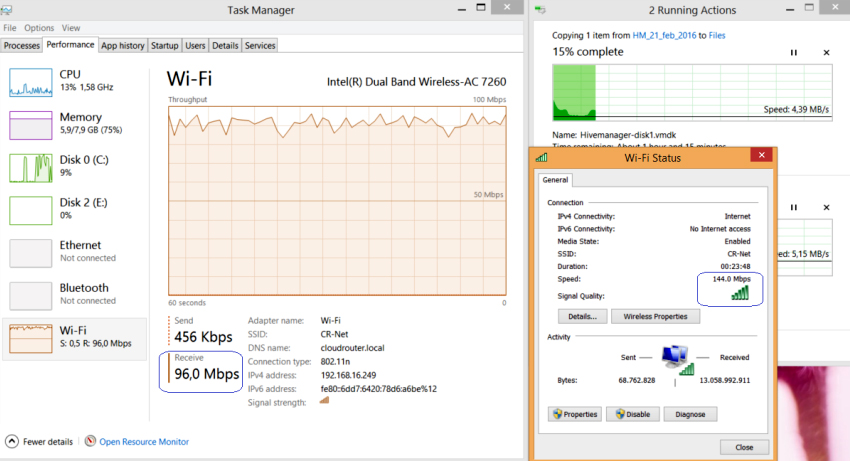
Infinity 3ac. The pilot tests in Denmark
Cloudrouter also had the opportunity to perform the pilot tests on the NFT 3ac, a pre – released LigoWave’s AP. The NFT 3ac has been tested at the installation, where the 90 NFT 2N dual – radio access points was already installed. The goal was to perform a realistic test, instead of a closed test scenario in which there is no form of co – channel interference.
The screenshots of the first test on NFT 3ac are given below

